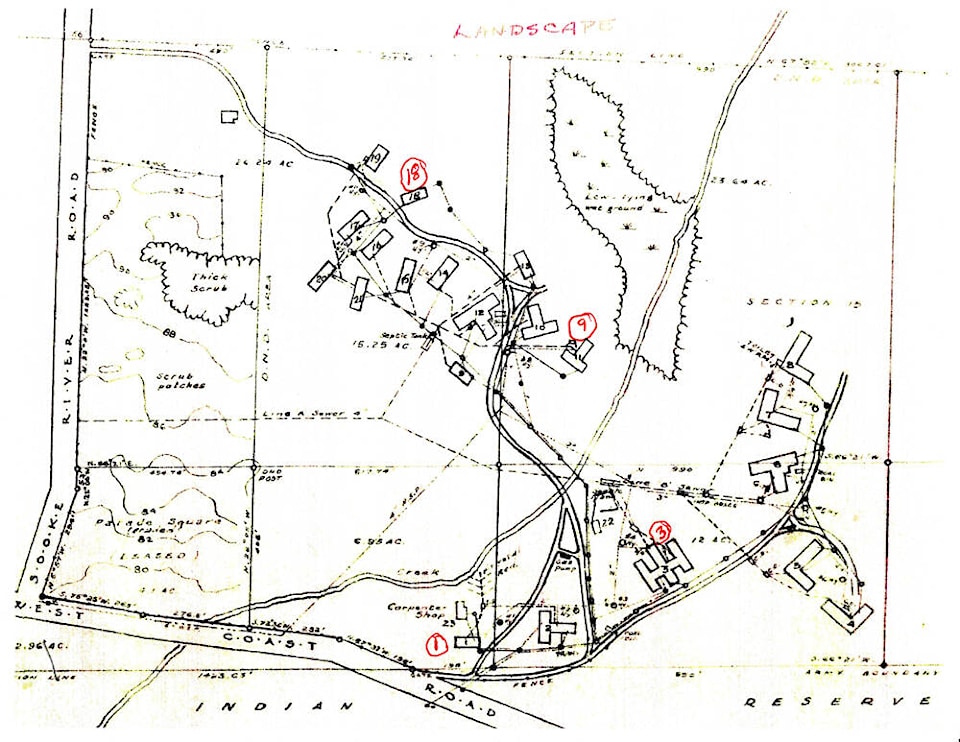Elida Peers | Contributed
Driving past Edward Milne Community School today, one could not imagine that for a period in the mid-1940s, this would be the scene (see map), though mostly screened from the road by evergreen trees.
The map reproduced here was offered to us by Brian Butler, whose family company now occupies part of the land shown, with the high school in the foreground.
The structures shown here comprised the Milne’s Landing Army Training Camp, established in 1943, which took conscripts from eastern Canadian for training here during the height of the Second World War.
This wartime enterprise and the attendant vehicle traffic transformed our quiet community.
The property pictured was part of the Milne farm. Still, wartime measures occurred, with the result that only the left (west) side of this map remained on the family farm, with the balance expropriated by the federal government.
We understand that a payment of $1 was made to Edward Milne.
After the war, the property was not returned to the Milne’s. It was provided to the newly formed School District No. 62 to house the first high school west of Victoria.
On the sketch map, you note the Circled #1 at the lower centre; during the war, this was the guardhouse, and postwar, it became the home of the school’s first principal, John Wilkinson, his wife Joyce, son John and daughter Barbara. As a teenager, I was their babysitter.
A bit to the right on the map, you’ll note Circled #3; this larger, extended structure was the officers’ quarters and mess. It was this building which became Milne’s Landing High School, housing grades seven to 12 in the various wings. Much later, an auditorium was built onto this structure. Circled #9 indicates the sergeants’ quarters, and Circled #18 the lecture hall.
In the map’s upper left corner is a small building, which, according to my memory, would not be part of the army camp but would be “Moss End,” the home of Hugh Milne before he left for Australia early in the 1900s. If I’m correct, this property was later bought and now holds a private residence.
The year 1943 brought two other changes to Sooke – one, the first resident B.C. Provincial Police detachment was established, and second, the burned down St. Rose Catholic Church at the corner of Sooke Reserve No. 1 was rebuilt; apparently, it was a requirement that church services be provided for the soldiers.
•••
Elida Peers is the historian of the Sooke Region Museum. Email historian@sookeregionmuseum.com.
ALSO READ: A look back at Sooke’s industrial past and natural beauty
